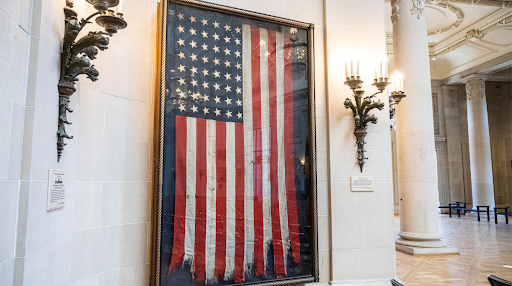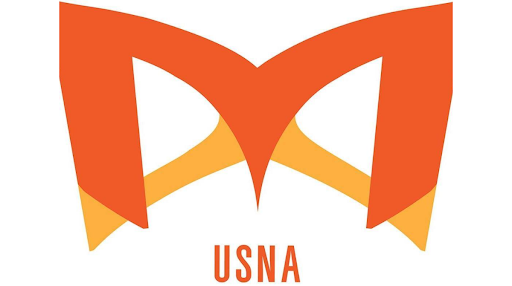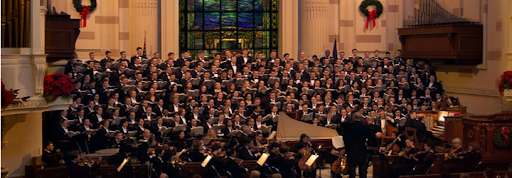What Is Veterans Day?
Veterans Day originated as "Armistice Day" on November 11th, 1918. It originally commemorated the armistice between the Allied forces and Germany that took place on the "eleventh hour of the eleventh day of the eleventh month." On June 28th, 1919, the Treaty of Versailles was signed, officially ending World War I. However, the day of the ceasefire, Armistice Day, marked the end of hostilities with Germany and the "war to end all wars."
In November of 1919, President Woodrow Wilson designated November 11th as the first commemoration of Armistice Day, stating, "To us in America, the reflections of Armistice Day will be filled with solemn pride in the heroism of those who died in the country's service and with gratitude for the victory, both because of the thing from which it has freed us and because of the opportunity it has given America to show her sympathy with peace and justice in the councils of the nations…"
In 1926, Congress passed a resolution for an annual observance of Armistice Day. In 1938, November 11th became a national holiday, primarily as a day set aside to honor WWI veterans. However, in 1954, after WWII and the Korean War, President Dwight D. Eisenhower officially changed the name of the holiday from Armistice Day to Veterans Day. Veterans Day was now a day to commemorate veterans of all wars, living or deceased.
After that, the Uniforms Holiday Bill was passed in 1968, ensuring three-day weekends for federal employees by celebrating four national holidays on Mondays: Washington's Birthday, Memorial Day, Veterans Day, and Columbus Day. As a result of the bill, Veterans Day was moved to the fourth Monday of October. The first Veterans Day under the new law was observed on October 25th, 1971, to great confusion. Despite the change, many state and local governments continued to celebrate the holiday on November 11th because of the date's historical significance.
It wasn't until September 20th, 1975, that President Gerald Ford signed a law returning Veterans Day's annual observance to its original date of November 11th. The law took effect in 1978, and since then, the Veterans Day holiday has been observed on November 11th.
Under President George W. Bush, the United States Senate Resolution 143 was passed on August 4th, 2001. The resolution designated the week of November 11th through November 17th, 2001, as "National Veterans Awareness Week," aiming to promote an understanding of veterans and the sacrifices they make for our country with elementary and middle school students.
In 2015, a bill known as the Veterans Day Moment of Silence Act was introduced in the Senate. This bill proposed that, each year, the President issue a proclamation calling for the people of the United States “to observe two minutes of silence on Veterans Day in honor of the service and sacrifice of veterans throughout the history of the Nation” beginning at 11:11 AM PST (2:11 PM EST). This bill was passed and signed into law in October of 2016.
How Is Veterans Day Celebrated?
Unlike Memorial Day, Veterans Day pays tribute to all American veterans, both those alive and those who have passed. It honors them for their patriotism, love of country, and willingness to sacrifice their lives for the common good.
Every Veterans Day and Memorial Day, Arlington National Cemetery holds an annual memorial service for the deceased. Over 400,000 people, most of whom served in the military, are buried at the cemetery.
As a national holiday, all government businesses are closed in observance of Veterans Day. The day is commonly marked by parades and public celebrations to thank veterans for their service. It is also common for the American flag to be hung at half-mast.
As Great Britain, France, Australia, and Canada were also involved in WWI and WWII, they also commemorate veterans on or near November 11th: Canada celebrates Remembrance Day and Britain observes Remembrance Sunday (the second Sunday of November). In Europe, as well as the Commonwealth countries, two minutes of silence are often observed at 11 AM on November 11th.
Additional Information Regarding Veterans Day
- It should be noted that the proper way to spell Veterans Day includes no apostrophe, as the day is not meant to indicate possession (as a “veteran’s day”) but rather to honor veterans. Be mindful of this when referring to the holiday in written communications.
- According to some sources, Emporia, KS is the “birthplace of Veterans Day,” as the day was organized and observed as Veterans Day there in 1953, one year before the nationwide recognition of Veterans Day in 1954. Ed Rees, a congressman from Kansas, proposed the federal bill changing the name of the holiday from Armistice Day to Veterans Day.
- Emporia is also home to a breathtaking monument composed of five pillars representing the Army, Navy, Marine Corps, Air Force and Coast Guard. The monument is specifically engineered in such a way that on Veterans Day, at 11:11 AM, the sun illuminates the openings in each of the five pillars, forming a spotlight pattern of the Great Seal of the United States.
- In 1947, a WWII veteran named Raymond Weeks organized a “National Veterans Day” including such festivities as a parade to honor veterans in Birmingham, Alabama. While not yet officially Veterans Day, he organized the event on 11/11/1947. President Ronald Reagan later honored him with the Presidential Citizens Medal in 1982.
Veterans Day is both a solemn and celebratory occasion. Take a moment this year and reflect on what veterans have meant to you, and what you can do to show your appreciation.
-1.png)









